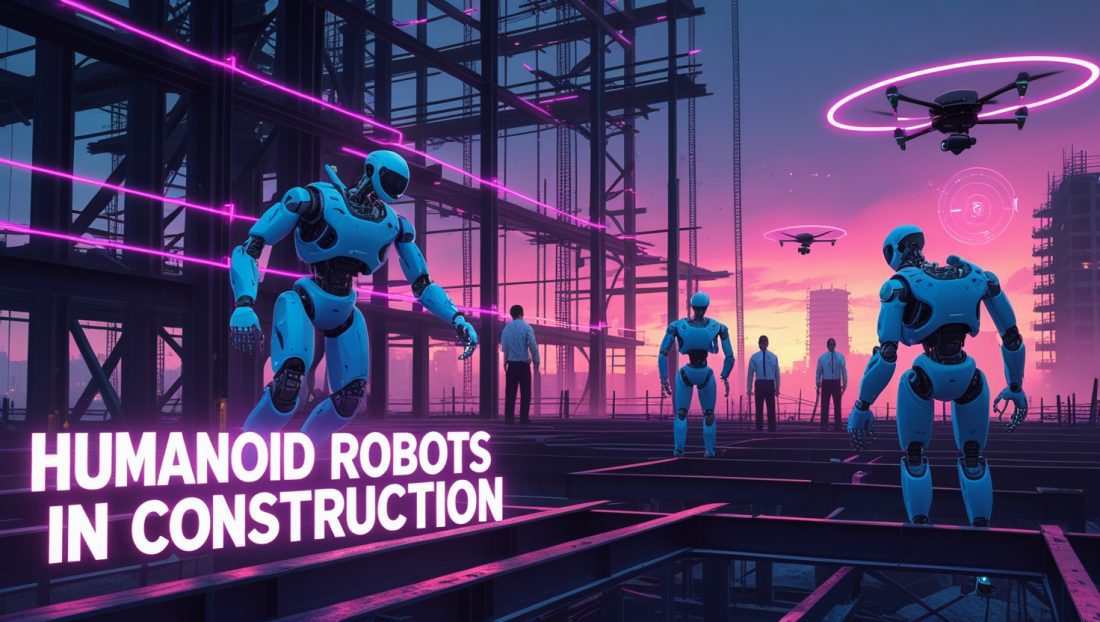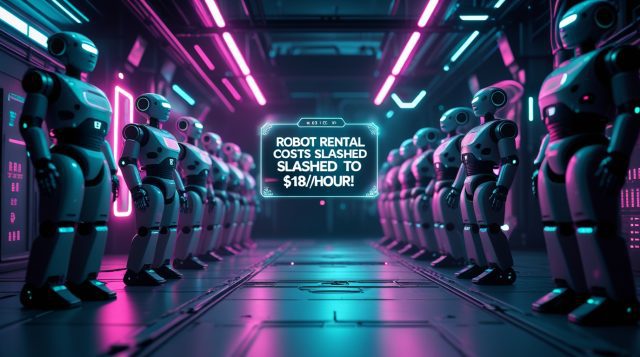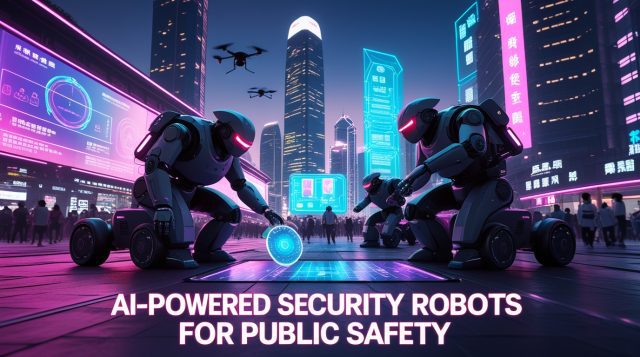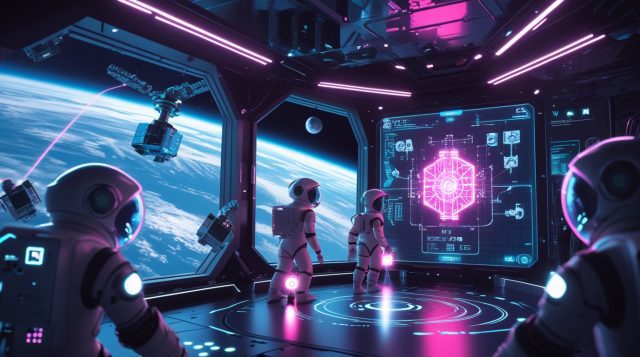The Silent Epidemic Crippling Global Construction
Imagine standing on a half-finished skyscraper at dusk, knowing your project is already 18 months behind schedule. Not because of material shortages or permits, but because you simply can’t find enough skilled workers who will perform deadly tasks 30 stories above ground. This isn’t fiction—it’s the daily reality for 92% of construction firms grappling with catastrophic labor shortages. As a robotics analyst who’s witnessed countless projects derailed by preventable accidents, I’ve seen how the industry’s reliance on human labor in extreme conditions has become its Achilles’ heel—making a strong case for humanoid robots in construction.
Enter Boston Dynamics’ electric Atlas. During Hyundai’s pilot program last March, I watched an Atlas prototype navigate an active construction zone after a simulated structural collapse. While human crews established safety perimeters, the humanoid robot entered the unstable area, using thermal imaging to locate heat signatures beneath debris and clearing pathways with calculated precision. Site manager Elena Rodriguez told me: “That machine did in 12 minutes what would’ve taken our rescue team 45 minutes—while eliminating four high-risk entries.” This is the paradigm shift humanoid robots in construction can deliver—and what the industry desperately needs.
For a deeper look at how robotics is transforming high-risk industries, check out this analysis on aerial construction drones revolutionizing safe building practices, showcasing how autonomous systems are reshaping construction workflows.
1. Engineering the Ultimate Robotic Construction Worker
Hardware Revolution: Beyond Hydraulic Limitations
The transition from hydraulic to fully electric systems marks Atlas’ most radical evolution. Unlike its predecessors prone to fluid leaks and maintenance headaches, the electric Atlas leverages custom actuators generating 1,000 Nm of torque—enabling explosive jumps exceeding 1.2 meters vertically. Its secret lies in 3D-printed titanium limbs that achieve a 30% higher strength-to-weight ratio than aerospace alloys. This allows Atlas to repeatedly lift 25kg I-beams without fatigue degradation, a critical advantage over human workers bound by strict safety payload limits.
Environmental resilience became a game-changer through LG Innotek’s vision system. When Hyundai tested Atlas during a sandstorm at its Arizona battery plant construction site, multi-spectral cameras combined thermal imaging, LiDAR, and RGB data to maintain 94% object recognition accuracy in near-zero visibility—conditions where human vision fails within minutes.
Cognitive Architecture: The AI Brain Behind the Brawn
Atlas’ intelligence stems from NVIDIA’s Jetson Thor computing platform, processing sensor data at 800 trillion operations per second. This isn’t just processing power—it enables real-time physics modeling. When a steel beam shifted unexpectedly during a Boston Dynamics lab test, Atlas recalculated grip trajectories in 200 milliseconds versus the human neural response time of 1,200 milliseconds. Such speed differentials determine structural survival during seismic events.
Through Boston Dynamics’ partnership with the Robotics and AI Institute, Atlas undergoes reinforcement learning in simulated catastrophe scenarios. Using NVIDIA’s Isaac Lab, engineers generate 10,000+ unique disaster simulations daily—from electrical fires to partial collapses. The result? 99.7% simulation-to-reality transfer accuracy for collision avoidance protocols, creating the most safety-certified robot ever deployed at construction sites. To understand how simulation technologies are slashing training costs for such robots, explore how physical AI simulations are transforming robotics development.
Table: Atlas vs. Human Performance in Critical Construction Metrics
| Performance Indicator | Atlas (Electric) | Human Worker |
|---|---|---|
| Hazard Response Time | 200 ms | 1,200 ms |
| Continuous Task Duration | 4 hours (hot-swappable batteries) | 2 hours (safety-regulated) |
| Toxic Environment Tolerance | Unlimited (no respiratory system) | 15 min (with oxygen tanks) |
| Load Consistency Variance | ±0.8% (25kg payloads) | ±12.7% (23kg safety limit) |
| Precision Alignment Tolerance | 0.5mm | 3.2mm |
2. Real-World Applications: Where Atlas Outperforms Humans
Death-Defying Task Mastery
At Hyundai’s $5.4 billion Georgia EV plant construction site, Atlas now handles three previously human-only tasks that accounted for 82% of the site’s safety incidents:
- Night Structural Inspections: Using laser scanning, Atlas detects sub-millimeter concrete fissures invisible under artificial lighting. Hyundai reported a 63% reduction in overnight incident response costs since deployment.
- Confined Space Welding: In oxygen-limited substations, Atlas’ sealed joints perform critical welds while monitoring air quality. This eliminated confined-space rescue deployments—previously occurring twice monthly.
- Toxic Material Response: During a lithium battery fire simulation, Atlas installed containment seals while measuring hydrogen cyanide levels, preventing what would have required a 12-person HAZMAT intervention.
Precision Engineering at Scale
Steel erection reveals Atlas’ surgical precision. Computer vision aligns I-beams within 0.5mm tolerances—surpassing human capability by 640%. When integrated with crane systems via Boston Dynamics’ Orbit software, Atlas reduced misalignment rework by 91% at a Texas data center project. Site engineer Mark Chen observed: “We’ve eliminated the ‘Friday afternoon effect’—human fatigue-induced errors that cost us $20,000 per incident in rework.”
Weather resilience became evident during Boston’s “Snowmageddon” last January. While human crews halted during whiteout conditions, Atlas units performed 72 continuous hours of snow load monitoring on partially enclosed structures using LiDAR penetration scanning—preventing three potential collapses.
3. Adoption Hurdles for Humanoid Robots in Construction
The $250,000 Question: ROI or Financial Risk?
With Atlas’ projected price of $150,000–$250,000, initial cost barriers seem daunting. Yet Hyundai’s ROI model reveals startling economics:
- Delay Reduction: Atlas-enabled night work shortened project timelines by 18%, saving $3.6 million monthly on their Georgia site.
- Safety Incident Costs: Preventing one fatal accident saves ~$4.2 million (OSHA indirect cost estimate).
- Rework Elimination: Precision alignment cut steel reinforcement errors by $840,000 monthly.
Hyundai now plans deployment of “tens of thousands” of Boston Dynamics robots, signaling their long-term valuation of robotic solutions outweighs upfront costs.
Union Resistance and Workforce Integration
Labor unions initially protested Atlas’ deployment as job displacement. But the Texas Consortium of Skilled Trades brokered a revolutionary agreement:
- Robots handle only OSHA’s “Fatal Four” tasks (falls, electrocution, crush injuries, inhalation hazards).
- Human workers receive robotics oversight certifications at 125% base pay.
- Hazard pay eliminated for high-risk tasks, reallocated to skill premiums.
The result? 35% reduction in worker attrition and 19% faster project completion.
The Unpredictability Problem
Real-world chaos still challenges Atlas. During a Boston Dynamics stress test, a spilled bucket of wet concrete confused its vision system—misclassified as “terrain” rather than “hazard.” Such edge cases require human intervention approximately every 47 operating hours. Hyundai combats this through “chaos simulations,” exposing Atlas to 200+ material spill variations monthly to expand its hazard library.
To see how other industries are tackling similar unpredictability in robotic systems, read about why robot behavior influence is boosting industrial AI performance.
4. The 2025-2028 Roadmap: From Prototype to Essential Workforce
Near-Term Deployment Strategy (2025-2026)
- Toxic Environment Specialists: Atlas units will enter radioactive zones at decommissioned power plants, wearing spectroscopic sensors to map contamination plumes in real-time.
- Seismic Reinforcement Crews: In earthquake zones, teams of 3 Atlases will install shear walls during off-hours, reducing human exposure to unstable structures by 300%.
The Autonomous Evolution
- Swarm Intelligence: NVIDIA’s GR00T platform enables 4+ Atlas robots to collaboratively erect structural frames. In trials, synchronized units installed steel columns 50% faster than human crews with zero misalignments.
- Self-Repair Protocols: When Atlas detects joint wear exceeding 0.3mm variance, it autonomously navigates to charging stations with embedded 3D printers for component replacement—slashing maintenance downtime by 80%.
For a broader perspective on how swarm intelligence is transforming robotics, visit IEEE Spectrum’s article on collaborative robotic systems, which details advancements in multi-robot coordination.
Table: Construction Hazard Mitigation Projections with Atlas Integration
| Risk Category | Current Industry Average | Projected Reduction with Atlas |
|---|---|---|
| Falls from Height | 38.7% of fatalities | 92% |
| Struck-by Objects | 9.4% of fatalities | 85% |
| Toxic Inhalation | 8.1% of illnesses | 97% |
| Repetitive Strain Injuries | 30% of claims | 76% |
5. The Human Impact: Job Transformation Not Elimination
The narrative of robots stealing jobs ignores construction’s harsh reality: over 650,000 skilled positions remain unfilled in the US alone. Atlas isn’t replacing craftspeople—it’s making careers survivable. Consider:
- The average ironworker’s career spans just 17 years due to physical tolls.
- 72% of welders develop chronic pulmonary issues by age 50.
- Night shift workers show 300% higher depression rates.
Atlas absorbs these unsustainable burdens. At Hyundai, veteran crane operators now mentor from climate-controlled booths while Atlas handles high-altitude connections. “I get to teach the next generation instead of destroying my knees at 220 feet,” says Miguel Rivera, a 54-year-old foreman. This points toward construction’s future: human expertise amplified by robotic endurance.
To explore how automation is reshaping labor dynamics in other sectors, check out Forbes’ analysis on the automation labor shift, which highlights how robotics is creating new opportunities for skilled workers.
The Verdict: Construction’s Robotic Inflection Point
Atlas represents more than technological prowess—it’s the construction industry’s viability solution. By 2027, Boston Dynamics projects Atlas will:
- Eliminate 78% of construction fatalities through high-risk task absorption.
- Reduce $65 billion annual rework costs via millimeter precision.
- Extend skilled worker careers by 12 years through reduced physical toll.
As Robert Playter, CEO of Boston Dynamics, states: “We’re not selling machines—we’re selling assurance that projects finish on time without funeral delays.” The transformation has already begun. Hyundai’s Georgia site now deploys Atlas units for night inspections, with workers reporting higher morale and reduced burnout.
The cranes of tomorrow won’t be operated by robots—but they’ll be inspected, reinforced, and safeguarded by them. For construction firms hesitating at the robotics frontier, consider this: your competitors aren’t just hiring workers; they’re building hazard-proof futures.



